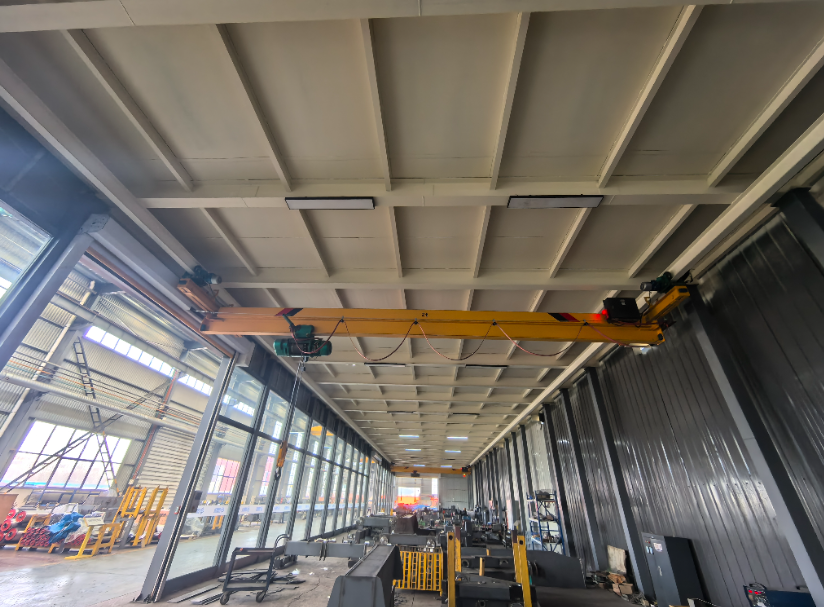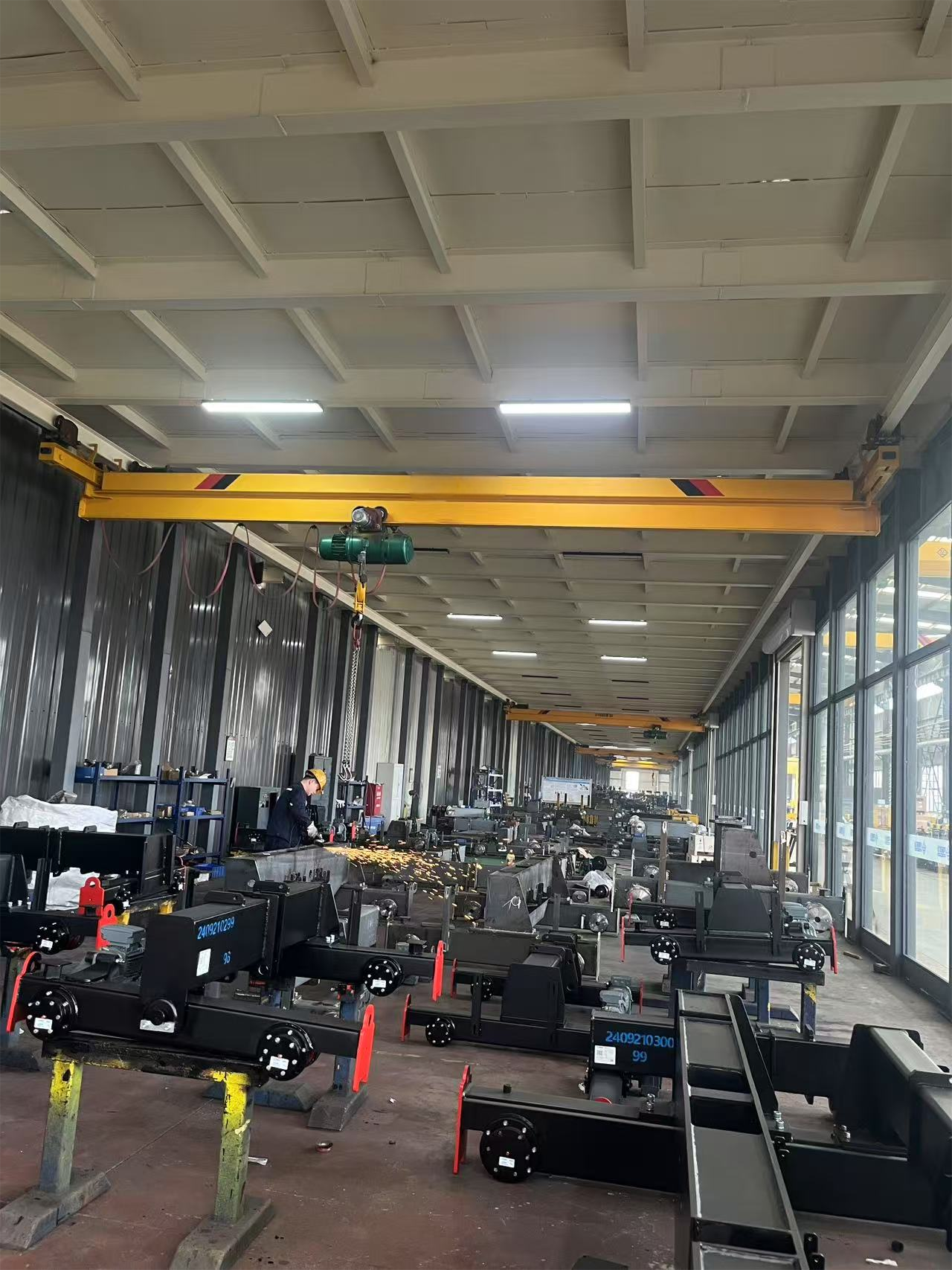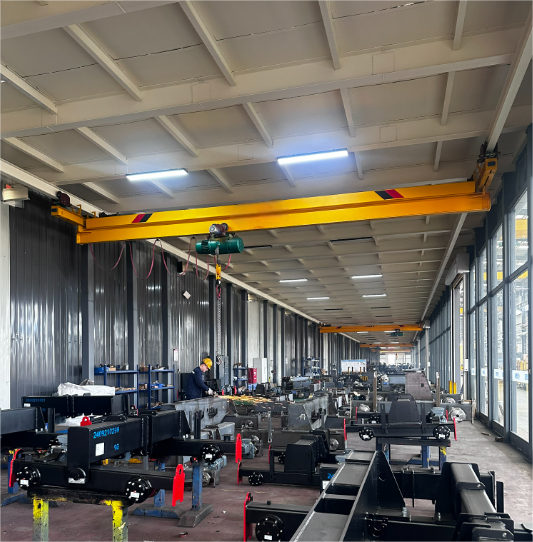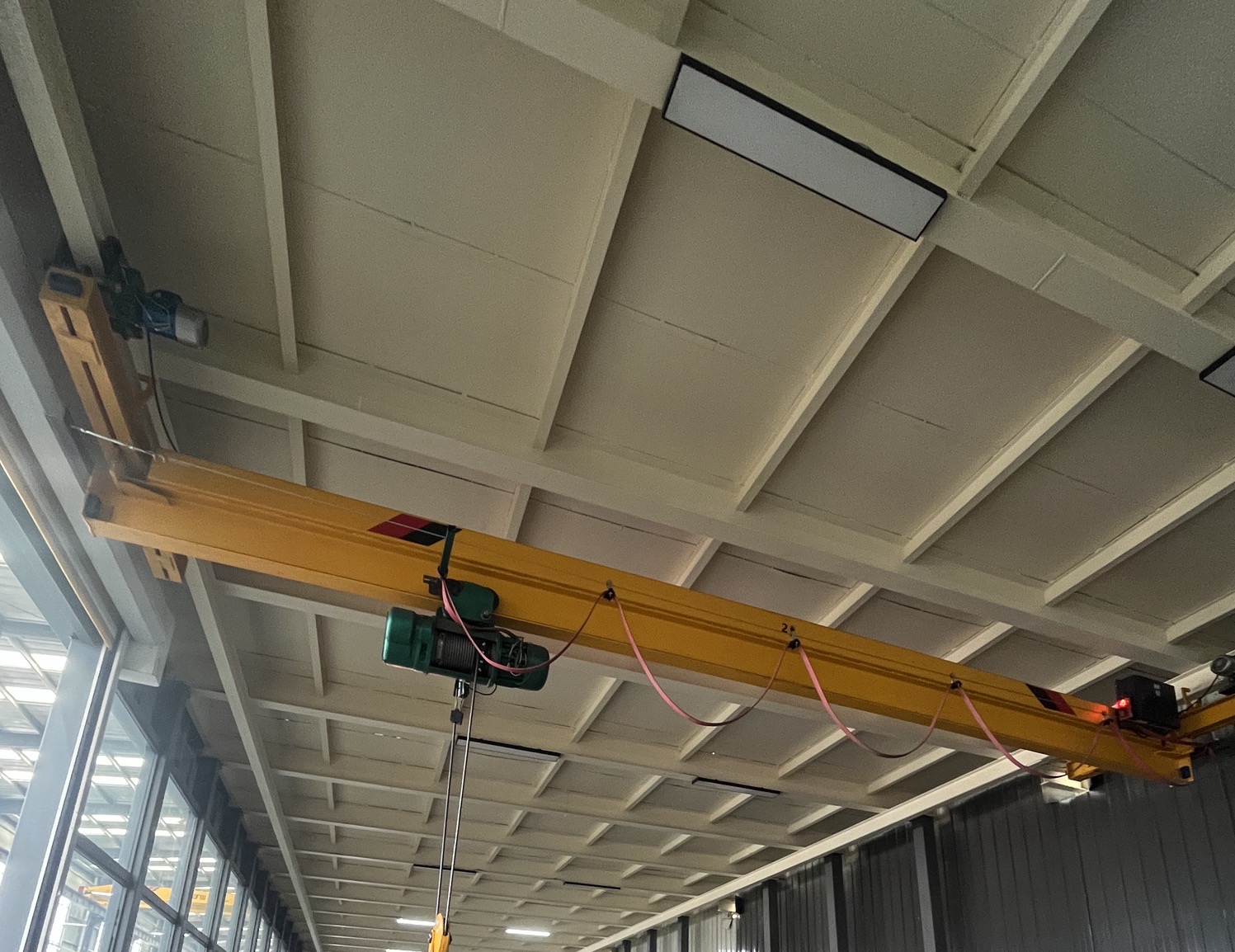As an indispensable and important equipment in modern logistics and industrial production, the design parameters of bridge cranes have a decisive influence on their use efficiency and applicability. Among them, span and erection capacity are the two most critical performance indicators in the design of bridge cranes. This article will explain in detail the design influencing factors of the span of bridge cranes and their erection capacity, and provide readers with a comprehensive technical reference.

1. The basic structure and working principle of bridge cranes
The bridge crane consists of four major parts: bridge frame, crane, access device and electrical equipment. The bridge frame is the main structure of the entire crane, which is installed on the track in the workshop to form a frame across the workshop. The crane is installed on the bridge frame and can move longitudinally along the bridge frame to undertake the task of lifting and moving objects. The access device includes an electric axle and a gear reducer, which is responsible for driving the operation of the bridge frame and the crane, while the electrical equipment provides control and power for the entire system.
The bridge crane is connected to the track on the workshop floor through the bridge frame. The crane moves along the bridge frame, and the hoist is lifted and lowered vertically to form a three-dimensional movement space. This structure enables the bridge crane to complete the lifting, transportation and stacking of materials in a large range, and is widely used in factory workshops, ports, warehouses and other places.
2. Definition and significance of the span of the bridge crane
The span of the bridge crane refers to the distance between the brackets at both ends of the bridge frame, that is, the span length of the bridge frame. The span directly determines the scope of use of the crane, that is, the lateral distance covered. A large span may cause the bridge frame structure to be too bulky and unstable, while a small span may not meet the actual work needs.
The reasonable design of the span has an important impact on the efficiency, stability and safety of the crane. An appropriate span can not only meet production needs, but also ensure the structural strength and service life of the equipment. Therefore, in the design process of the bridge crane, the determination of the span is a key parameter that needs to be repeatedly weighed and optimized.

3. Factors affecting the span design of bridge cranes
The span design of bridge cranes requires comprehensive consideration of multiple factors, including the lifting requirements of materials, the space limitations of the workshop, the load-bearing capacity of the equipment, and the use environment. The following are the main factors affecting span design:
①Working environment and use scenarios
The working environment of the bridge crane directly affects the choice of span. The spatial layout in the workshop, the obstacles that exist, and the location where the materials need to be hoisted are all important references for determining the span. For example, in a workshop that needs to span a production line or equipment, a larger span may be required to ensure that the crane can cover the entire work area.
In addition, when bridge cranes are used outdoors, environmental factors such as wind speed and geological conditions may also need to be considered to ensure the stability and safety of the equipment.
②Load requirements
The load capacity of the crane, that is, its maximum lifting weight, is closely related to the span design. According to the mechanical strength theory, the load-bearing capacity of the crane decreases as the span increases. Therefore, when determining the span, it is necessary to ensure that the structure of the bridge frame and the crane can withstand the required maximum load while ensuring the strength and stability of the equipment.
③Structural strength and material selection
The strength and rigidity of the bridge frame are one of the key factors in determining the span. The design of the bridge frame needs to meet the basic requirements of structural mechanics to ensure that it does not deform or damage excessively under the maximum load and the most unfavorable loading conditions. Common bridge frame structures include single beam, double beam and box beam. The double beam bridge frame is suitable for cranes with larger spans due to its high strength and rigidity.
Material selection is also an important factor. The use of high-strength steel can reduce the cross-sectional size while ensuring the strength of the bridge frame, thereby reducing the deadweight of the equipment and improving its lifting capacity.
④ Efficiency and economy
Too large or too small a span will affect the efficiency of the crane. A span that is too large may cause the equipment to be too heavy, increase manufacturing and installation costs, and may also reduce the moving speed and responsiveness of the equipment. A span that is too small may not meet the actual lifting requirements, limiting the scope of use of the equipment.
Therefore, the design of the span needs to optimize the economy as much as possible while meeting the functional requirements to achieve the most cost-effective design.
4. The erection capacity of a bridge crane
The erection capacity of a bridge crane is mainly reflected in its lifting height and span range. These two indicators jointly determine the scope of use and efficiency of the equipment.
① Lifting height
The lifting height refers to the distance between the highest point and the lowest point that the crane hoist can reach. The size of the lifting height directly affects the upper and lower operating range of the crane. It is usually determined according to the vertical space of the workshop and the height of the hoisted materials during design. A lifting height that is too large may increase the weight and cost of the equipment, while a lifting height that is too small may not meet the actual needs.
In practical applications, the selection of lifting height needs to comprehensively consider factors such as the workshop floor height, equipment layout, and the hoisting method of the materials.
② Span range
The span range refers to the maximum distance that a bridge crane can cover in the horizontal direction. The size of the span range directly determines the use range of the equipment in the horizontal direction, which is usually determined by the design span of the bridge frame. When the span range is large, the crane can complete the hoisting task in a wider area, but it may also bring about problems such as increased weight and decreased stability of the equipment.
③ Lifting speed and moving speed
The lifting speed and moving speed directly affect the working efficiency of the crane. A lifting speed that is too slow may result in a lengthy hoisting process, while a moving speed that is too low may reduce the hoisting efficiency of the equipment. During the design, it is necessary to reasonably select the lifting speed and moving speed according to actual needs to ensure the efficiency of the equipment.

5. Optimization and practice of span design of bridge cranes
In practical applications, the span design of bridge cranes needs to follow the following principles:
Functional principle: The span design must first meet the actual lifting needs and ensure that the crane can complete the task within the required range.
Economic principle: Under the premise of meeting functional requirements, the cost of equipment should be reduced as much as possible, including manufacturing cost and use cost.
Safety principle: The span design must ensure that the equipment has sufficient strength and stability during use to avoid accidents caused by structural problems.
Practical principle: The span selection should be as convenient as possible for the installation, maintenance and use of the equipment, while also taking into account future scalability and flexibility.
In the actual design process, the span selection can be optimized through the following measures:
Conduct on-site investigation: Understand the actual spatial layout and lifting needs of the workshop, and determine the minimum and maximum spans.
Conduct structural analysis: Use modern engineering methods such as finite element analysis to analyze the strength and rigidity of the bridge frame to ensure the rationality of the span design.
Comparative analysis: Select the best solution by comparing different span solutions.
Conduct type tests: Verify the feasibility and reliability of span design by manufacturing trial samples and conducting type tests.
The span and erection capacity of a bridge crane are the two most important performance indicators in its design. The design of the span needs to comprehensively consider multiple factors such as the working environment, load requirements, structural strength and use efficiency. Reasonable span design can not only improve the use efficiency of the crane, but also reduce equipment costs and improve the economy and reliability of the equipment.
With the continuous development of modern industrial technology, the design of bridge cranes is also constantly improving. In the future, Jinghe bridge crane design will pay more attention to intelligence, integration and greening to meet the requirements of modern industrial production for high efficiency, energy saving and environmental protection. In the design of span and erection capacity, more emphasis will be placed on the flexibility and scalability of the equipment to meet the use needs of different occasions.


